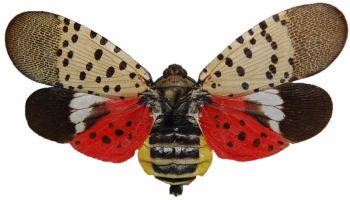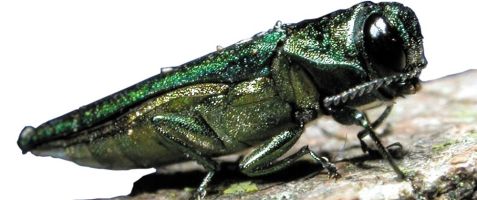Top 10 Things to do This Spring for your Trees, Shrubs & Plants
Spring is here, and while many people focus on spring cleaning their homes, the trees, shrubs, and other plants that make up your landscape also need some TLC. The end of winter is the best time of the year to think about how you want your yard to look in the coming spring and summer. With that thought in mind, Stein recommends some winter cleanup activities and spring preparation to aid the landscape’s overall tree and plant health care. We have compiled a list of the top 10 things you must do this spring to keep your landscape beautiful and valuable.
1. Trimming and Pruning Trees and Shrubs
Dead or broken branches on your trees and shrubs are future breeding grounds for disease and pests, and one way to prevent this problem is pruning and trimming. Pruning and trimming involve selective, precise cuts on certain branches that enhance plants’ health while maintaining their appearance.
Dead, broken, or weak branches pose safety hazards for people and any surrounding property. For example, we have worked with some local customers who saw that strong winds have caused trees to fall in their yards or into their neighbors’ yards. To mitigate these risks, trimming dead branches or thinning them when necessary can help reduce friction when wind storms occur and also allow better airflow.
Pruning can create beautiful visuals, stimulating lush foliage and plentiful blooms. However, when done incorrectly, pruning can severely damage the tree, reducing its ability to acquire proper nutrients. Professionals will be able to evaluate each tree and provide experienced pruning to improve tree health and safety.
2. Monitor for Pests
In spring, a variety of pests come into action and pose a threat to your landscape. One such common pest is the emerald ash borer, which causes significant damage to ash trees. These pests feed on a tree’s bark, disrupting the tree’s ability to transport vital nutrients and water, eventually leading to death. Other common pests in Pennsylvania and Delaware include spotted lanternfly, which leaves oozing, weeping wounds in the trees as the eggs are laid and hatched within the trunk.
To help prevent any damage from these pests, keep a close eye on your landscape for early signs of pest infestation. These pests leave signs on trees or shrubs, such as tiny holes in the bark, sawdust at the base of the tree, dead branches, and thinning canopy that can alert you to their presence. If you notice any of these signs, contact an arborist who can inspect your trees and diagnose any issues. The arborist can suggest various treatment options, including insecticides or pruning of the affected branches, depending on the severity of the infestation.
3. Beware of Brown Leaves
Spring is the season of growth and renewal. For trees, this means the emergence of fresh green leaves. If you have trees on your property, keep an eye on the color of their leaves during this time. If you observe any brown or curled leaves, they may indicate a problem with the tree’s health. An arborist can inspect your tree, identify the underlying issue, and determine the best action to remedy the situation.
4. Fix Winter Damage
After the winter season, inspecting your trees for any damage caused by winter storms, ice, and cold temperatures is essential. Look for signs of damage, such as broken branches, bark splitting, and sun scald.


- Broken branches can be pruned to prevent further damage.
- Bark splitting can be repaired with a tree wrap.
- Sun scalds, caused by the sun warming up the bark during the day and then cooling down at night, can be prevented by wrapping the trunk with light-colored tree wrap.
By taking these steps, you can help ensure the health and longevity of your trees.
5. Ensure Proper Soil Composition
As with most vegetation types, trees require a special blend of soil nutrients, PH levels, and moisture retention for optimum health. A certified arborist can test your soil and make recommendations based on their findings. You may want to fertilize if you see signs such as dead branches and tips (once the tree blooms), abnormal leaf color, or fewer leaves than usual.
In addition to fertilizing, changing watering routines or addressing pH levels are two other tasks that can go a long way to ensure your soil composition is conducive to healthy tree growth.
6. Properly Mulch
Mulch helps trees retain moisture and also reduces the growth of weeds. Take the time to carefully remove any old mulch and debris that may have accumulated over the winter months. Adding a 3-inch layer around the tree’s base will help promote proper growth. Avoid piling mulch too high or too close to the tree trunk. Too much mulch can reduce airflow, and mulch touching the tree can contribute to fungal growth.
7. Water When Dry
After a dry spring, keep your trees and plants healthy by regularly watering your landscape. While a tree needs enough water, too much can also be harmful. Have your arborist check for signs of possible rotting in tree roots if your tree health seems less than optimal.
Root rot is a condition that can occur when a tree’s roots are damaged or decayed due to overwatering, poor drainage, or other factors. If left untreated, root rot can cause the tree to die and even pose a risk to nearby plants and structures.
8. Don’t Prune Prunes
Winter is the ideal time for pruning fruit trees. Pruning fruit trees in winter (when fruit trees are dormant) helps to promote healthier growth, encourage better fruit production, and prevent disease and pest infestations. On the other hand, some trees benefit from spring pruning, which can help shape the tree and remove any dead or damaged branches after the winter season.
9. Get an Inspection
You want your landscape to bloom and look beautiful throughout spring and summer, right? Spring is a great time to call us for a landscape inspection to ensure your trees are healthy and present no potential risks. Some things your arborist might see that a non-professional could miss are insect infestation, such as emerald ash borer, signs of diseases, or weak branches that will likely fall.
10. Schedule Your Preventive Maintenance
Be sure to schedule maintenance for trees that are susceptible to insects and disease or that seem to be struggling. The following pests can be caught early and prevented with proper maintenance:
- Emerald Ash Borer
- Hemlock Wooly Adelgid
- Sycamore Anthracnose
- Bacterial Leaf Scorch
- Japanese Beetles
Spotted lanternfly is also a common pest, and we are certified to work in all areas of spotted lanternfly infestation.
Why Choose Stein Tree Service?
Our staff of tree care specialists is dedicated and has hundreds of years of combined experience.
Our equipment is state-of-the-art, and radio dispatched for immediate response. The company fleet is comprised of several aerial lift trucks, a spider lift, chippers, chipper trucks, stump grinding machines, and machinery for right-of-way work.
We have provided tree care and tree stump removal service to thousands of customers throughout the Delaware Valley and parts of Pennsylvania and maintain the highest customer satisfaction. Most of our business comes to us via referrals from past customers. Be sure to contact us with any questions or to schedule a free, no-obligation consultation with one of our Tree Care Specialists.



